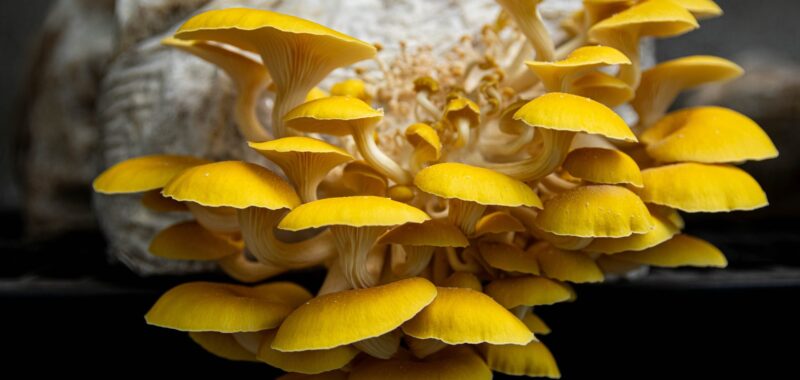Our tour includes a stop at Mushroom Mountainâs lab, where a couple of techniciansâ affectionately referred to as âlabbiesââare working. Around them, shelves are lined with bottles full of mushrooms stewing in alcohol to create extracts, and bags packed with substrate [the surface on which an organism, like a plant, fungus, or animal, lives] impregnated with mushroom spawn, so customers can grow their own mushrooms at home.
There are several larger bags that are experiments as the team works to figure out how to cultivate notoriously difficult-to-propagate mushroomsâsuch as morels, chicken of the woods, maitake, and cauliflower mushroomsâwhich all have vital, complex, still-not-fully-understood relationships with trees.Â
Take morels, which have a mycorrhizal partnership with certain trees, including tulip poplar, elm, apple, and sycamore. This symbiotic give and take involves the mushrooms receiving carbohydrates from the tree, while giving back water and nutrients. Fully understanding and replicating those systems is still a work in progress.

